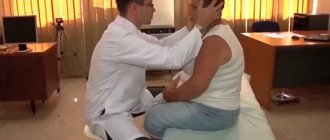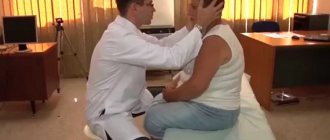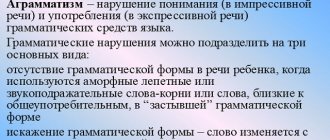04.12.2017
What does the state of “deep stun” mean?
Stunning syndrome is the initial stage of complete loss of consciousness, the so-called precoma. There are several gradations of depression of consciousness: moderate, deep stupor and stupor, after which coma sets in - complete loss of consciousness, when the perception of external stimuli is practically excluded.
How does moderate stun differ from deep stun?
Moderate stunning is accompanied by a slowdown in mental activity and a decrease in the ability to actively pay attention. You can communicate with the patient, but his answers to questions are delayed, sometimes the question needs to be repeated or the victim needs to be patted. The patient quickly gets tired, his facial expressions are poor, the patient reacts to pain, and may lose orientation in the area.
With deep stupor, the patient experiences drowsiness, he rarely makes any movements and his mental activity is difficult. Verbal contact with the victim is severely difficult, answers can only be obtained after persistent requests, they are monosyllabic in nature - “yes”, “no”, while the victim is able to provide his information: full name, age. When communicating with him, you need to repeat the same word over and over again. In this case, the victim is able to follow basic commands: open his eyes, show his tongue, etc. The defensive reaction to pain is preserved, but orientation in place and time is absent.
Impaired consciousness
According to K. Jaspers (1923), the following signs are common to all types of disturbances of consciousness:
- detachment, disorder of direct reflection of real objects and phenomena in the form of difficulty or shutdown of sensory cognition, its fragmentation or distortion associated with deceptions of perception;
- violation of rational cognition, that is, understanding of connections and relationships between objects and phenomena due to impoverishment, shutdown or disorganization of thinking, impaired judgment;
- disorientation in place, time, surrounding persons, and sometimes in one’s own personality. Orientation may be completely absent or false;
- difficulty remembering impressions of ongoing events and subjective experiences, which manifests itself upon exiting the state of impaired consciousness as congrade amnesia. Memories may be incomplete, inconsistent, unclear, alienated, like dreams. Some impressions, on the contrary, come easily to memory and are particularly vivid - the Moly phenomenon. There is also delayed or retarded amnesia, which occurs several minutes or even hours after the end of confusion.
| | A clinical psychologist will correctly diagnose and apply the necessary psychological measures to treat disorders of consciousness |
The diagnosis of clouded consciousness can be established if all four of the mentioned signs are present. But this does not mean that you need to wait for the cessation of acute psychosis and confirmation of the fact of amnesia in order to make sure that consciousness is impaired. It should also be borne in mind that shallow degrees of stupefaction may not be accompanied by obvious disturbances in orientation and the ability to make concrete judgments, even if later all the impressions of this period were lost.
A retrospective assessment of the fact of confusion sometimes has to be given by amnesia for the period of acute mental consciousness, as well as by the content of the surviving memories, which are often very typical for one or another form of confusion. Meanwhile, recognition of the type of clouding of consciousness is not always possible due to its mixed, transitional or very dynamic pictures. In such cases, confusion is stated without indicating its form. A distinction is made between non-productive and productive disorders of consciousness.
Non-productive disorders are characterized by a decrease in the activity of consciousness and the absence of productive psychopathological symptoms (delusions, deceptions of perception). A distinction is made between stunned consciousness, stupor and coma.
Stun. It is characterized by a significant increase in the threshold of perception for external and internal impressions, a slowdown and impoverishment of mental activity towards its complete cessation. Stunning is defined in this regard as a state in which the external with difficulty becomes internal, and the internal becomes external.
In a state of stunning, only intense stimuli cause a response and can attract the attention of patients. Questions are not perceived immediately, incompletely, the meaning of complex questions is not understood. The answers are monosyllabic, imprecise, and usually follow a long pause. Orientation in place, time, and events is incomplete, inaccurate, or completely disrupted. Increased drowsiness, spontaneity, akinesia, and indifference are noted. Affective reactions are extremely sluggish. The background mood can be euphoric. Facial expressions are poor, there is no gesture, the voice is quiet, without modulation. There is no understanding of the painfulness of the condition. Perseverations are observed. Memories of impressions during this period, and sometimes even the fact of stunning, are not preserved. There are no productive psychopathological symptoms, confusion, or fears observed.
Numbing is a mild degree of stunning. Patients give the impression of slightly intoxicated, distracted, uncollected people. They are stupid, do not immediately grasp the meaning of speech addressed to them, are somewhat late in perceiving what is happening, respond and act at random. Patients may be euphoric and fussy. Characteristic are fluctuations in clarity of consciousness and short episodes of inclusion in the situation. In a state of nullification, patients can assess their condition optimistically even with serious injuries. For example, after an injury, a patient makes no complaints, refuses medical care, and tries to help other victims while his own life is in danger. In this regard, patients are not hospitalized, discharged from the hospital ahead of time, or the patients themselves leave the department.
Somnolence is a form of shallow, but less dangerous than numbing, deafening of consciousness. Characterized by increased drowsiness. Left to himself, the patient immediately falls into a deep sleep. For a short time, through vigorous stimulation, he can be awakened, contact can be made, after which he falls asleep again. Somnolence can often be observed after convulsive seizures upon recovery from an epileptic coma. After a seizure, patients seem to sleep deeply for some time and only then come to their senses. It is possible to awaken them, although not without difficulty, but this should not be done - awakening may be incomplete and result in motor agitation with aggression.
Stunning resembles the symptoms of a psychoorganic syndrome (torpidity, spontaneity, weakness of judgment, memory), but is not one. It is observed upon recovery from a coma, but, in turn, can develop into stupor and coma.
Sopor. Only elementary manifestations of mental activity are preserved. In response to a loud call, the patient may, for example, turn his head, open his eyes briefly, or respond to an injection with a grimace of pain, a groan, or jerking his hand away. Various neurological disorders are detected: decreased muscle tone, weakened tendon, periosteal, skin reflexes, etc. Pain sensitivity, pupillary, corneal and conjunctival reflexes are not impaired.
Coma. Complete depression of mental activity. Muscle atony, areflexia, bulbar disorders, mydriasis with lack of pupillary response to light, pathological reflexes, pelvic disorders, etc. are detected. States of “brain death” with artificial maintenance of the functions of internal organs in resuscitation are called superior or beyond coma. Identical to apallic Kretschmer syndrome.
Stunning develops as a result of brain hypoxia, edema and swelling of brain tissue, damage to neurons by toxic products, and the development of acidosis in various pathological conditions (skull trauma, intoxication, vascular disorders, tumors, somatic diseases, etc.). Productive disorders of consciousness include delirium, oneiroid, twilight stupefaction, and amentia.
Delirium. It is characterized primarily by various disturbances of perception: illusions, hallucinations, disturbances of sensory synthesis. Visual illusions (pareidolia) and hallucinations (scene-like, zoological, demonomaniacal, palingnostic, cinematic, polyoptic, macro- and micro-optical, visions of threads, wires, webs, etc.) predominate. Tactile illusions of perception are often observed (the imaginary presence of parasites, reptiles, insects on the skin, under it; sensations of animal bites, blows, injections, cuts, spilling liquid). Some types of tactile hallucinations may indicate the nature of delirium.
In cocaine delirium, for example, these may be imaginary sensations of crystals. Delirium in tetraethyl lead poisoning is characterized by hallucinations localized in the oral cavity - an imaginary sensation of hair or threads. With infectious delirium, visceral hallucinations are possible. Typical delirium is characterized by:
- impairment of remembering what is happening, sometimes - confabulations. Thinking is fragmented, unstable figurative delusional ideas are expressed, and false recognitions are observed. Memories of the period of impaired consciousness are incomplete and incoherent;
- false and constantly changing orientation in place, time, surrounding persons, situations. Self-orientation is mostly preserved. Patients oppose themselves to visions, treat them as external to themselves, and do not identify themselves with them;
- affective lability. There is a rapid change in manifestations of fear, horror, surprise, curiosity, and indignation, reflecting the content of perceptual deceptions. Negative emotional reactions predominate. The latter can be colored by a peculiar humorous attitude towards perceived visions, as happens with alcoholic delirium (“gallows humor”);
- motor agitation, increased talkativeness. Patients are mobile, fussy, constantly feverishly busy with something, hiding, running away, attacking, defending themselves, etc. Sometimes there is an increased responsiveness to speech (for example, the patient can immediately answer questions, also addressed to strangers);
- fluctuations in the intensity of delirious phenomena with their intensification in the evening and at night and weakening during the day. Short-term clarity of consciousness can be observed during a conversation with patients.
There are three stages in the development of delirium. In the first, there is a slight increase in mood, acceleration of associations, influxes of vivid figurative memories, fussiness, hyperesthesia, sleep disturbances, anxious dreams, instability of attention, short-term episodes of disorientation in time, environment, situation, and affective lability. In the second stage, pareidolia occurs, anxiety increases, anxiety and fearfulness intensify, and dreams take on the character of nightmares. In the morning, sleep improves somewhat.
At the height of delirium, in its third stage, hallucinations, agitation, and disorientation are observed. Recovery from delirium is often critical, after prolonged sleep, followed by asthenia. The above-mentioned signs characterize the clinical picture of the typical, most common delirium. Other options are possible (A.G. Goffman). Abortive delirium - its duration does not exceed several hours, hallucinations are observed without disorientation. Hypnagogic delirium - hallucinations occur when falling asleep, but are not observed in reality.
Delirium without delirium - disorientation and fussy agitation are not accompanied by perceptual deceptions and delirium. Systematized delirium - scene-like visual hallucinations are observed, which, unlike oneiroid, lack megalomaniac content and scale. The depth of stupefaction may be insignificant, with partial orientation in place and time preserved.
In severe delirium, the phenomena of stunned consciousness with subsequent total amnesia and neurological, somatic and autonomic disorders predominate. Variants of severe delirium are, in particular, murmuring (mumbling) and professional types. The first is characterized by hyperkinetic, bed-bound excitation, inarticulate muttering and grasping movements - a symptom of carphology (nearby objects are grasped; in more severe cases, grasping movements are performed in the air). In occupational delirium, motor arousal is expressed by automated professional actions. There is no reaction to the environment and contact with patients in severe delirium.
Delirious stupefaction is observed in intoxication, infectious, somatogenic, traumatic psychoses, and organic diseases of the brain. Oneiroid. Dreamlike, fantastically delusional stupefaction. Characterized by the following features:
- an abundance of polymorphic psychopathological symptoms. An involuntary flow of vivid ideas (dreams, figurative mentism), scene-like hallucinations and pseudohallucinations, fantastic delusions, various sensory synthesis disorders, affective disorders, catatonic disorders, phenomena of depersonalization and derealization are observed;
- coherence, consistency of psychopathological experiences, their subordination to a single plot, one theme;
- romantic-fantastic content of painful experiences. Upon leaving oneiroid, patients talk about exciting travels, flights in the Universe, visits to other planets, ancient civilizations, the afterlife, new forms of life, etc. This can captivate patients to such an extent that, returning to real life, they regret about this and for some time they feel the desire to again plunge into rapturous dreams;
- violation of orientation in one’s own personality. Patients do not feel like witnesses to imaginary events, but rather their direct and active participants; they feel like they have been reincarnated into other beings, have died, and have changed their human quality. With delirium, according to a well-known comparison, the patient can be likened to a spectator in the stalls watching what is happening on stage. With oneiroid, the patient is no longer a spectator, he himself becomes an actor, a character, since during psychosis various disturbances of self-awareness arise, affecting the auto-, allo-, and somatopsychic spheres. One’s own body may be perceived as having disappeared, transformed into an uncertain state (cloud, beam, plasma, etc.). The soul “separates” and exists independently of the body, etc. The perception of time is disrupted: centuries, eras flash before the mind’s eye, time can go in any direction, freezes or flows intermittently. Orientation in the environment suffers. It can be partial, incomplete (oriented oneiroid), illusory-fantastic (the environment is perceived in accordance with the content of dreams), double (correct and false at the same time). At the height of oneiroid, there is complete detachment from the environment, the projection of fantastic pictures into the outside world disappears (Tiganov, 1982);
- the lack of connection between the content of painful experiences and the characteristics of external behavior, characterized by the phenomena of catatonic stupor or agitation. Contact with patients is severely limited or absent. By the way a patient behaves in oneiroid, it is impossible to determine what the content of his inner life is at this time. Only a few details of behavior allow one to guess about this: an enchanted gaze directed into space, individual words and phrases, symbolic actions, a mysterious smile, an expression of admiration;
- memories of subjective phenomena during oneiric stupefaction can be relatively complete and coherent. Impressions of what is happening in the surrounding reality are much worse reproduced or completely forgotten. There are depressive and expansive variants of oneiric clouding of consciousness.
In the first of them, the content of dream dreams is consonant with the prevailing depressive affect (scenes of hell, world cataclysms, etc.), in the second - with an elevated mood (exciting space travel, pictures of paradise, etc.).
In the development of oneiroid, observed in the clinical structure of attacks of recurrent schizophrenia, several stages are distinguished (Papadopoulos, 1967).
At the stage of clinical precursors of oneiroid, the dynamics of mental disorders are as follows.
The initial stage of the development of an attack is expressed by general somatic and affective disorders. Malaise, headaches, paresthesia, fainting, vomiting, low-grade fever and other general phenomena are observed. Affective disorders include mild depression, hypomania, alternating hypomania and depression. With depression, there is mild melancholy with irritability, capriciousness, touchiness, asthenia, drowsiness, overvalued education, sensitive ideas of relationships, hypochondriacal disorders. When mood increases, attention is drawn to excessive activity with hypersociality, “excellent” health and other disorders. A hypomanic state can have the character of a productive mania, but as agitation increases, the patients’ activities turn into a chain of unfinished undertakings.
At the stage of delusional affect, pronounced affects of fear, anxiety, increased confusion, various affectively saturated delusional ideas, and delusional behavior are observed. The phenomena of depersonalization are added (a feeling of alteration of the Self, alienation of one’s own mental acts). Episodes of delusional orientation in the environment occur.
At the stage of affective-delusional derealization and depersonalization, against the background of depression with lethargy, excited mania or labile affect, delusional ideas of staging, special meaning, intermetamorphosis, positive and negative doubles develop. A double orientation in the situation is characteristic: along with delusional disorientation, a generally correct understanding of the environment is preserved.
At the stage of fantastic affective-delusional derealization and depersonalization, fantastic delusional ideas appear (antagonistic delusions, delusions of grandeur, high origin, Cotard's delusions). Catatonic disorders are added. A double orientation in the situation, alternating at times with delusions, remains.
Subsequent disorders relate to oneiroid proper. There are three stages in the process of its development.
The first is the stage of illusory-fantastic derealization and depersonalization. It is characterized by an illusory-fantastic perception of reality: the surroundings are perceived as part of a fairy tale plot, an episode of a historical event, a scene of the other world, etc. A delirium of metamorphosis arises, a feeling of one’s own reincarnation into the characters of fairy tales, myths, and legends. Symbolism predominates in thinking: instead of causal connections and real relationships, symbolic connections and magical relationships are established. Among perceptual disorders, hyperesthesia, cinematic hallucinations, negative hallucinations, and pseudohallucinations predominate. Catatonic disorders are expressed. The orientation is delusional.
The second is the true oneiroid stage. The consciousness of patients is filled with dreams, they are immersed in a world of fantastic experiences. There is complete detachment from the environment. Colorful fantastic and romantic events unfold before the “inner eye” (magical initiations, apocalyptic scenes, etc.). Severe disorders of self-awareness (“fragmentation”, “dissolution”, monstrous metamorphoses of the Self) are characteristic. Catatonic disorders are most pronounced.
The third is the fragmentary oneiroid stage. It is characterized by the disintegration of a single storyline of oneiric experiences, their fragmentation, confusion within the dream-like fantastic events themselves. This stage resembles amental stupefaction and is usually completely amnesic.
Oneiric clouding of consciousness is observed in the structure of attacks of periodic and fur-like schizophrenia, with epileptic psychoses (in the form of paroxysms, without the dynamics described above), exogenous-organic and intoxication psychoses. Exogenous-organic and intoxication oneiric states are mostly short-lived, fragmentary, and rarely reach the level of dream-like oneiroid. The content of the experiences is banal, ordinary, and simplified; patients are more accessible to contact and do not exhibit significant catatonic disorders. Oneiric episodes often serve as a prelude to delirious stupefaction, so that it is not always easy to decide what the relationship is between one and the other component of confusion in the structure of psychosis.
Twilight stupefaction . Characterized by the following features:
- sudden onset and end of a painful condition;
- a sharp narrowing of the circle of actual ideas, thoughts and motives, a significant limitation of access to external impressions (probably the origin of the term itself is connected with this: patients perceive only a small part of the environment, just as with the onset of darkness only a little that is nearby is seen);
- frantic agitation of patients, in which extremely dangerous acts and senseless destruction are committed. Outwardly correct and formally ordered behavior, as if pre-planned, can also be observed;
- deep disorientation followed by complete amnesia. In a number of cases, elementary orientation in the environment, correct recognition of individuals, elements of self-awareness - an oriented twilight stupefaction - are preserved. There are episodes of twilight stupefaction confined to sleep. Thus, a patient with polymorphic seizures “suddenly” wakes up from time to time and does something for 5–10 minutes. For example, “looking for cockroaches in the kitchen.” In such states, she understands where she is, recognizes loved ones who are trying to find out what is happening to her, and answers questions. Then clarity of consciousness is just as suddenly restored, she understands that she was inadequate and remembers what she did.
The following types of twilight stupefaction are distinguished. Delusional variant - delusional ideas predominate, delusional behavior occurs. Amnesia here is incomplete - when questioned, patients report individual details about the delusional experiences that arose during the period of disturbance of consciousness. The hallucinatory variant is characterized by the dominance of frightening illusions, auditory and visual hallucinations, a state of hallucinatory excitement, and sometimes partial or delayed amnesia. In childhood, some types of night terrors can occur in this type.
Dysphoric variant - affective disturbances prevail in the form of anger, rage, fear with relatively mild clouding of consciousness. Dromomanic tendencies may also be detected. Outpatient automatism is paroxysms of a disorder of consciousness with externally ordered behavior such as aimless and fairly prolonged wandering (automatic walking) in the absence of delusions, hallucinations, or affective disorders. Sometimes provoked by a state of alcoholic intoxication. Seizures of ambulatory automatism can be confined to the period of sleep - somnambulism (sleepwalking).
Close to somnambulism is somnambulism - speech automatisms in a dream. In most cases, sleepwalking and sleeptalking are of a neurotic nature and are associated with dissociated sleep disorders. Unlike neurotic epileptic sleepwalking (meaning seizures themselves; neurotic forms of somnambulism can also be observed in patients with epilepsy) are characterized by a certain (like seizures) autochthonous rhythm of occurrence, develop on average much less frequently and usually without connection with the impressions of the past day. It is impossible to awaken an epileptic somnambulist: persistent attempts to do this can contribute to the development of a convulsive attack.
Paroxysms of sleepwalking are observed at a strictly defined time of the night and are reproduced in a stereotypical form. By the way, it should be noted that the practice of folk healers has long used observations about the difference between epileptic sleepwalking and neurotic sleepwalking: a sleepwalker would have a wet rag placed in front of the door or by the bed at night. A neurotic person usually wakes up when he steps on it, while an epileptic somnambulist does not. The next morning, patients feel exhausted, as after a regular seizure, and, as a rule, they do not remember the fact of sleepwalking. Probably similar to neurotic sleepwalking and sleep-talking are expressive acts in sleep. Usually emotions during dreams do not have external expression. But it often happens that patients laugh or sob in their sleep, waking up crying, with tears.
There are psychogenically caused twilight states, characterized by exclusion from the real situation and transfer to a hallucinatory, replacing a traumatic situation for patients. The environment is perceived incompletely, in accordance with painful experiences. The behavior of patients is bright, expressive, maybe even demonstrative. Partial amnesia is possible, covering mostly external events. There may be psychogenic episodes of ambulatory automatism, in particular somnambulism (an example from fiction is Lady Macbeth).
Hysterical twilight stupefaction is observed in reactive psychoses, as well as low-progressive schizophrenia with hysterical dissociative manifestations. A peculiar version of psychogenic twilight stupefaction - amok - was described among the aborigines of the Malay Archipelago. It manifests itself in sudden states of excitement with aggression and homocidal actions. In shamanism, during rituals (the shaman’s “communication” with spirits), the shaman, accompanied by singing and beating the drum, also falls into a hysterical twilight state with frenzy, ecstasy, sometimes ending in seizures.
Twilight disturbances of consciousness occur with epilepsy, brain tumors, pathological intoxication, in the acute period of traumatic brain injury, with vascular, intoxication psychoses.
Prolonged absence. A condition that superficially resembles stunning. Adynamia, apathy, immobility, difficulty perceiving and comprehending impressions, and perseveration are observed. The performance of habitual actions is not impaired, and this makes this condition similar to ambulatory automatism. Wrong things may happen. Prolonged absence begins and ends suddenly, its duration reaches several days. Brief episodes of clarity of consciousness are observed. The EEG reveals changes typical of absence seizures (peak-wave complexes with a frequency of three discharges per second). Apparently, a more adequate name would be “absence status.” In the status of complex absence seizures, various disturbances occur: catatonic episodes reminiscent of psychomotor seizures, twilight states, stupor - all this makes clinical diagnosis without an EEG study very problematic.
Amentia. Characterized by the following features:
- confusion with an affect of bewilderment and symptoms of hypermetamorphosis. There is also a rapid and chaotic change in the external manifestations of various emotions;
- incoherent thinking, incoherent speech, increased talkativeness;
- motor (hyperkinetic) excitation, usually limited to the bed, the breakdown of complex motor formulas. Choreiform hyperkinesis, catatonic disorders, senseless and uncoordinated throwing are observed - yactation, a symptom of carpology;
- deep disorientation in one’s own personality and the environment, followed by total congrade amnesia;
- scattered hallucinations, incoherent delusions, manic and depressive affects, delirious, oneiric episodes preceding the onset of amental confusion itself;
- asthenic phenomena upon recovery from a psychotic state;
- tends to be prolonged - the duration of amentia can be weeks or even several months. Amentia-like episodes observed during acute psychotic onsets of schizophrenia are usually shorter (hours, days).
A distinction is made between classic (confused), catatonic (mostly stuporous), manic, depressive and paranoid variants of amentive clouding of consciousness (Kraepelin, 1927; Meynert, 1980; Korsakov, 1892; Serbsky, 1892; Molokhov, 1961, etc.). It is noted that the classic version of amentia occurs mostly in toxic infectious diseases and the previously identified hypertoxic form of schizophrenia. Amentia has been described in infectious, somatogenic, intoxication, vascular diseases, organic lesions of the central nervous system, reactive psychoses, and schizophrenia. Not all authors identify it as an independent syndrome. Adjacent to amentia is a state of asthenic confusion identified by some authors, the development of which is based on an extreme degree of neuropsychic exhaustion.
Analysis of the clinical structure and dynamics of various forms of disorders of consciousness suggests the existence of important differences between them, indicating the depth of damage to the integrative mechanisms of mental activity. Thus, one can see that congrade amnesia is consistently worsened along the following chain of disturbances of consciousness: oneiroid, delirium, twilight stupefaction, amentia, stupor.
In the same order, impoverishment occurs, the impoverishment of subjective experiences, the aggravation of behavioral disorders, and the increasing vitalization of disorders (if we compare the typical forms of the mentioned forms of confusion).
This scale of disorders of consciousness also shows what combinations and transitions from one form to another are possible and what the clinical assessment of the corresponding tendencies should be. Thus, the transition of oneiroid to delirium or amentia indicates a worsening of the condition. The twilight gloom that occurs after stunning indicates dynamics in the opposite direction. The appearance of professional and exaggerated delirium marks a tendency to transition to a state of twilight stupor, and severe delirium to stunned consciousness. The end point of all forms of stupefaction is stunned consciousness, and then stupor and coma. Back to contents
How is stun different from stupor?
Both disorders are characterized by severe lethargy, immobility, and difficulty in contact. However, stupor, as a rule, develops against the background of a somatic illness, trauma, infection, etc., and stupor occurs during the course of mental illness, primarily schizophrenia. When stupor occurs, the patient experiences delusions and hallucinations, while stupor is characterized by complete indifference and absence of internal experiences.
Published at Mon, 04 Dec 2021 09:32:20 +0000
- 5
- 4
- 3
- 2
- 1
(0 votes, average: 5 out of 5)









